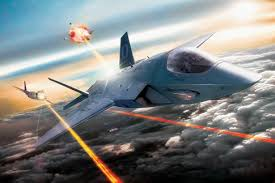
Breaking News
 The #1 Most Dangerous Fat in the World!
The #1 Most Dangerous Fat in the World!
 Is $140K the New Poverty Line? Is This the End of America's Middle Class?
Is $140K the New Poverty Line? Is This the End of America's Middle Class?
 Here Are the NEWLY RELEASED Epstein Images Tied to Powerful Democrats
Here Are the NEWLY RELEASED Epstein Images Tied to Powerful Democrats
 Joe Biden Still Struggling to Raise Money for Presidential Library – No New Donations...
Joe Biden Still Struggling to Raise Money for Presidential Library – No New Donations...
Top Tech News
 This tiny dev board is packed with features for ambitious makers
This tiny dev board is packed with features for ambitious makers
 Scientists Discover Gel to Regrow Tooth Enamel
Scientists Discover Gel to Regrow Tooth Enamel
 Vitamin C and Dandelion Root Killing Cancer Cells -- as Former CDC Director Calls for COVID-19...
Vitamin C and Dandelion Root Killing Cancer Cells -- as Former CDC Director Calls for COVID-19...
 Galactic Brain: US firm plans space-based data centers, power grid to challenge China
Galactic Brain: US firm plans space-based data centers, power grid to challenge China
 A microbial cleanup for glyphosate just earned a patent. Here's why that matters
A microbial cleanup for glyphosate just earned a patent. Here's why that matters
 Japan Breaks Internet Speed Record with 5 Million Times Faster Data Transfer
Japan Breaks Internet Speed Record with 5 Million Times Faster Data Transfer
 Advanced Propulsion Resources Part 1 of 2
Advanced Propulsion Resources Part 1 of 2
 PulsarFusion a forward-thinking UK aerospace company, is pushing the boundaries of space travel...
PulsarFusion a forward-thinking UK aerospace company, is pushing the boundaries of space travel...
 Dinky little laser box throws big-screen entertainment from inches away
Dinky little laser box throws big-screen entertainment from inches away
 'World's first' sodium-ion flashlight shines bright even at -40 ºF
'World's first' sodium-ion flashlight shines bright even at -40 ºF
Air Force Wants Lasers On Large Planes By 2022

X-wings these are not. Someday, laser-toting airplanes may be sleek, small fighters, but first the U.S. Air Force wants to put laser guns on big, bulky, and decidedly unsexy aircraft. USAF's first laser weapons will go on C-17s and C-130, planes better known for carrying cargo than packing a punch.
Scout Warrior explains:
[Air Force Chief Scientist Greg Zacharias] explained that much of the needed development involves engineering the size weight and power trades on an aircraft needed to accommodate an on-board laser weapon. Developing a mobile power-source small enough to integrate onto a fast-moving fighter jet remains a challenge for laser technology, he added.
"The other part is all the component technology. You are going to give up fuel or some armaments. It is not just getting enough power on board it is getting the aiming technology. Its dealing with turbulent air flow on a high-speed platform," Zacharias said.



